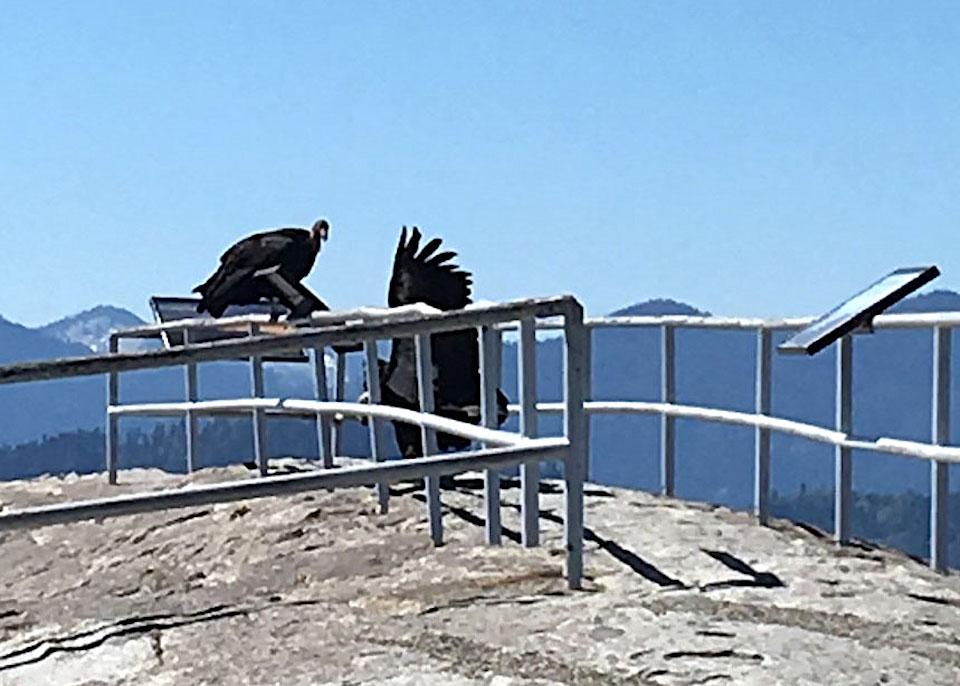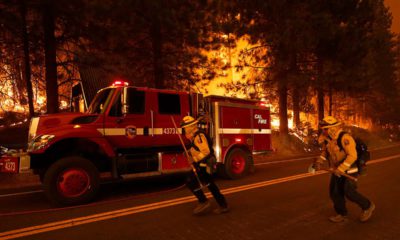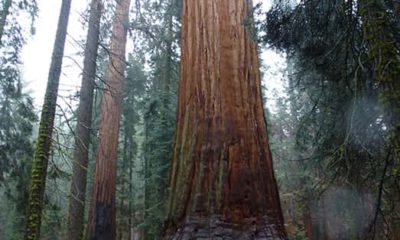Published
5 years agoon

Several iconic California condors have returned to the majestic trees and cliffs of Sequoia National Park for the first time in nearly 50 years.
Some of the endangered condors, which are reclaiming their historic habitat, were spotted atop the 6,725-foot granite dome of Moro Rock in late May, the National Park Service said Tuesday.
“Condors were consistently seen throughout the parks until the late 1970s. Observations became increasingly rare throughout the latter portion of the century as the population declined,” said Tyler Coleman, a wildlife biologist with Sequoia and Kings Canyon national parks. “Four condors were spotted flying near the Giant Forest and at least two near Moro rock.”
In addition, condors were tracked flying around Giant Forest, according to Dave Meyer, a California condor biologist with the Santa Barbara Zoo.
“We use GPS transmitters to track the birds’ movement, which can be over hundreds of miles on a single day,” Meyer said. “On this particular day, we documented the birds’ signals around Giant Forest, and we are excited that park employees observed the birds and confirmed their use of this important historic habitat.”
The birds are scavengers and they almost died out in large part due to ingesting lead in the carcasses of animals shot by hunters.
“Condors were consistently seen throughout the parks until the late 1970s. Observations became increasingly rare throughout the latter portion of the century as the population declined,” Coleman said.
In the early 1980s, all 22 birds remaining in the wild were trapped and brought into a captive-breeding program that began releasing condors into Southern California’s Los Padres National Forest in 1992.
That flock has expanded its range while other condors now occupy parts of California’s Central Coast, Arizona, Utah, and Baja California. The total wild population now numbers about 340.
“As biologists, we are excited to see condors continue to expand back into their historic range. And also for the opportunity to engage with the local communities to share what they can do to contribute to the recovery of California condors, and also inform them about threats to these birds,” said Laura McMahon, a wildlife biologist with the USFWS California Condor Recovery Program.
(Associated Press contributed to this article.)
Bill McEwen is news director and columnist for GV Wire. He joined GV Wire in August 2017 after 37 years at The Fresno Bee. With The Bee, he served as Opinion Editor, City Hall reporter, Metro columnist, sports columnist and sports editor through the years. His work has been frequently honored by the California Newspapers Publishers Association, including authoring first-place editorials in 2015 and 2016. Bill and his wife, Karen, are proud parents of two adult sons, and they have two grandsons. You can contact Bill at 559-492-4031 or at Send an Email



Yosemite, Sequoia & Kings Canyon National Parks All Closing Due To Hazardous Air


Sequoia Complex Fire Grows to 114,320 Acres, Threatens Tulare County Communities
Wildfire Closes Generals Highway. Evacuation Warning for Three Rivers.


Wildfires Force Temporary Closures of Southern, Sierra Nevada National Forests


Sequoia, Kings Canyon National Parks Removing Mentions of Robert E. Lee


Yosemite Reopens Thursday. You’ll Need a Reservation to Get In.



